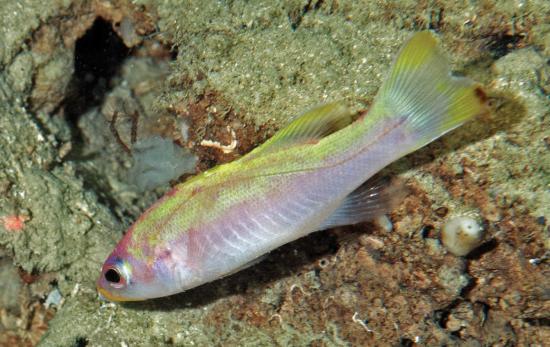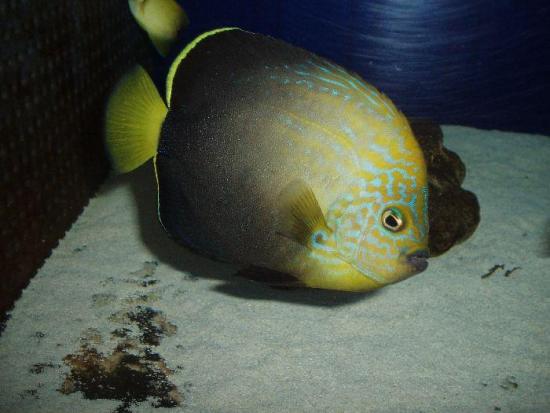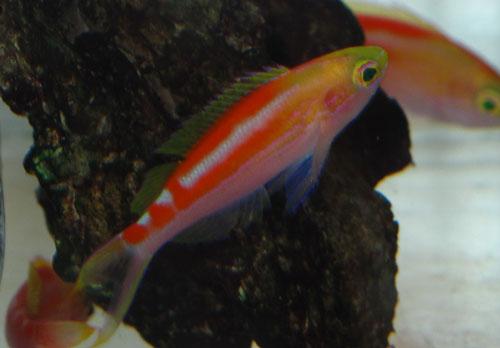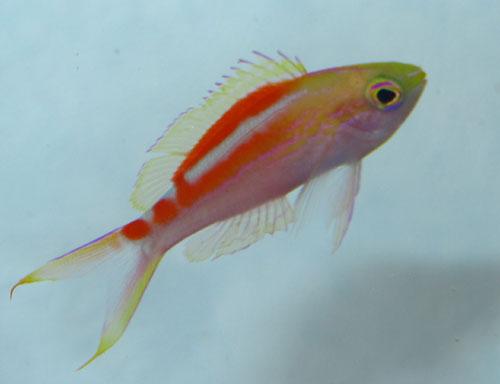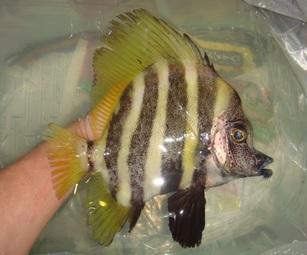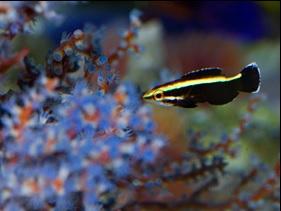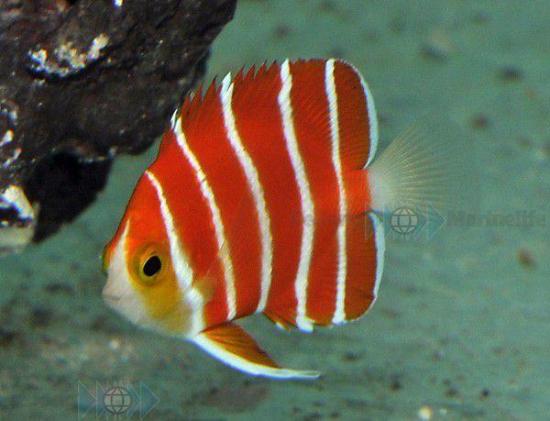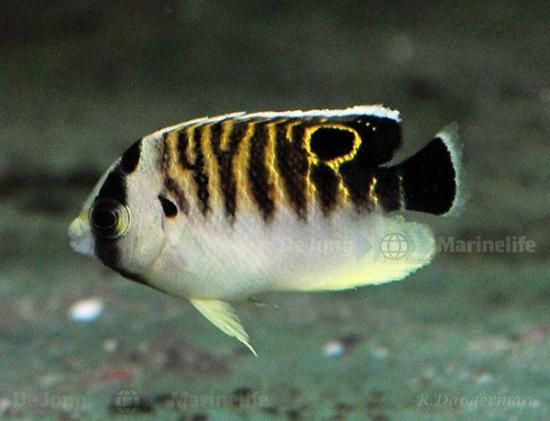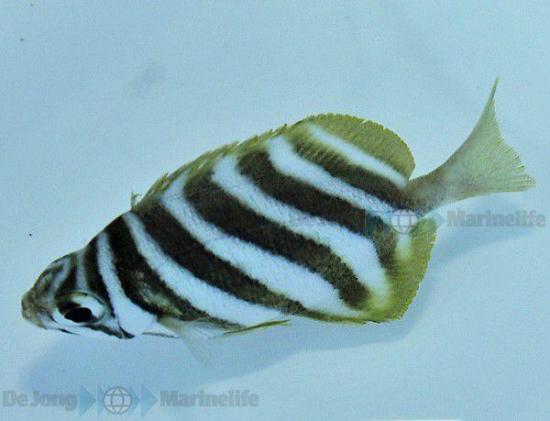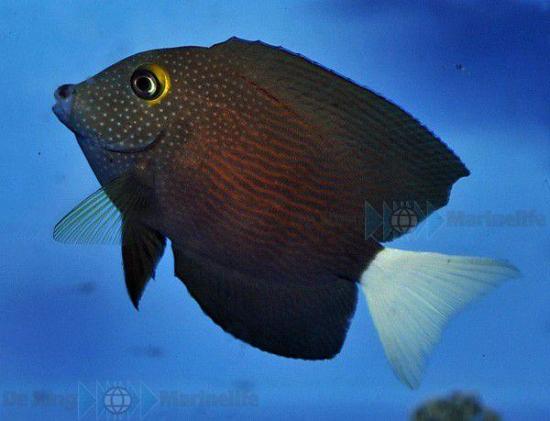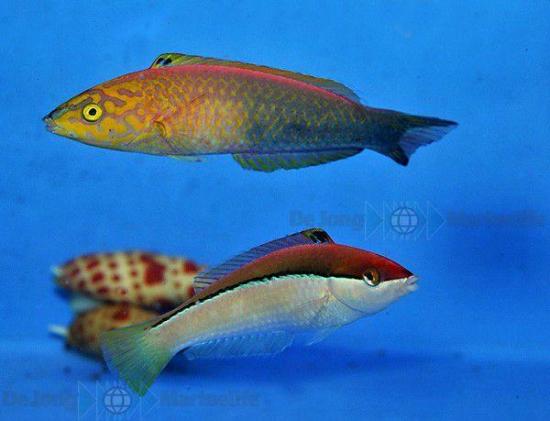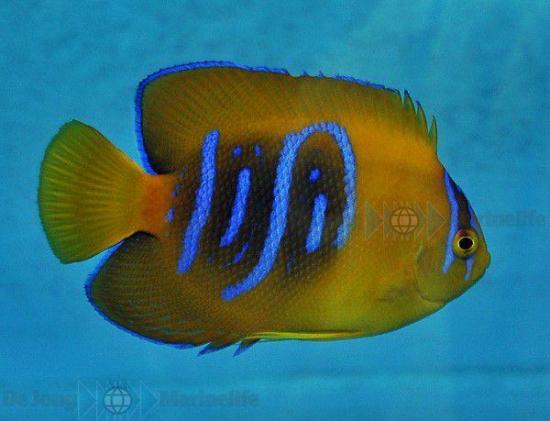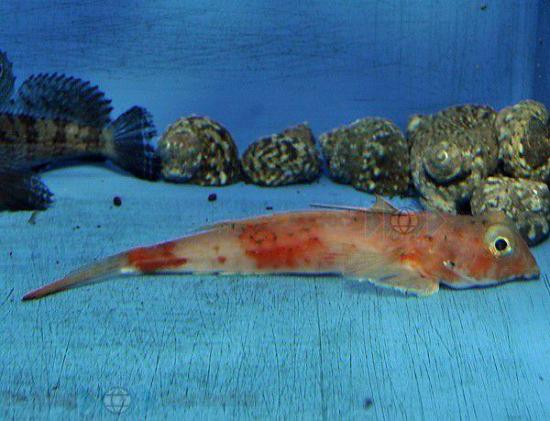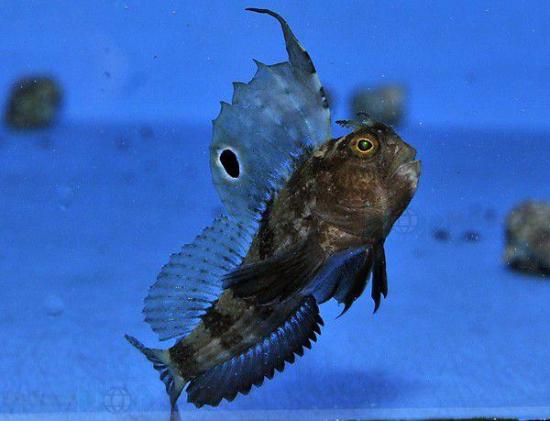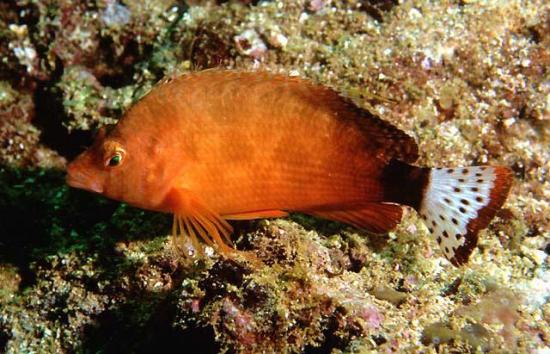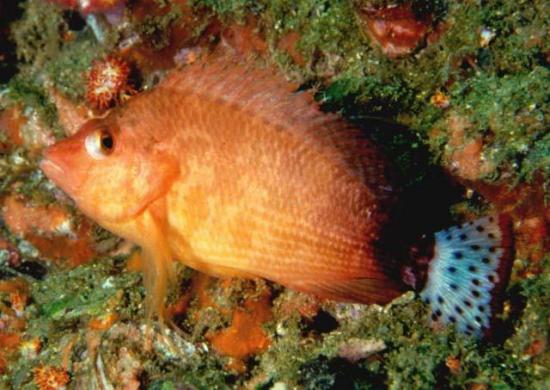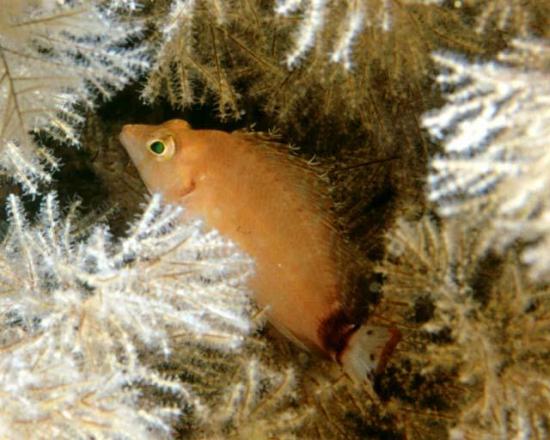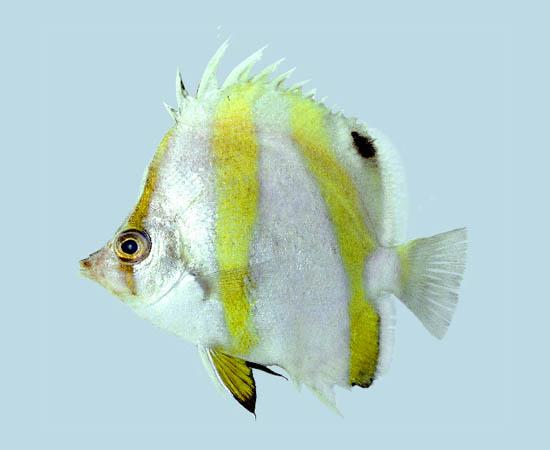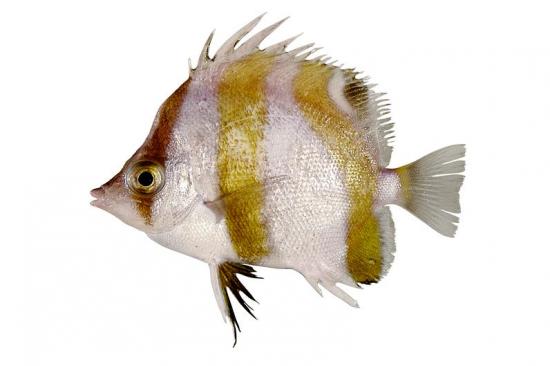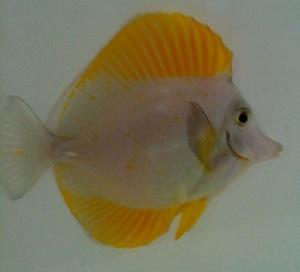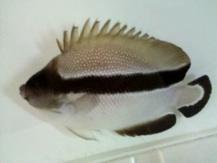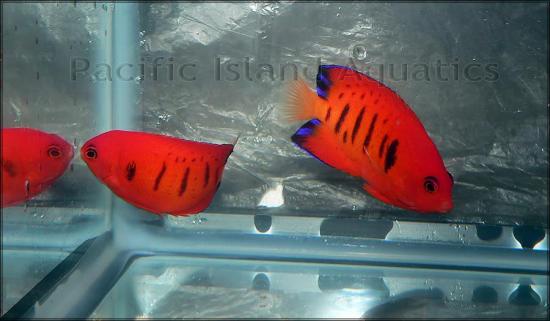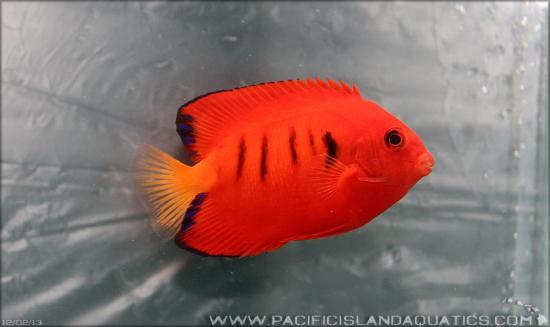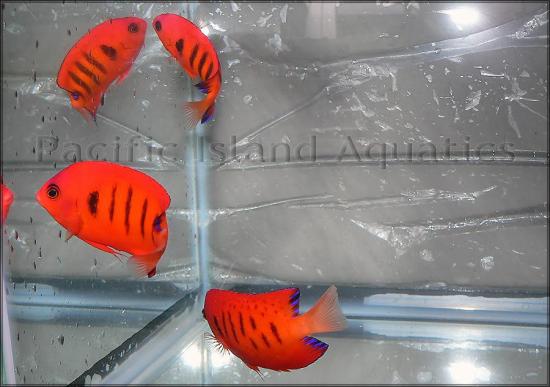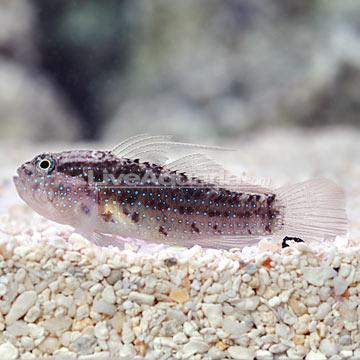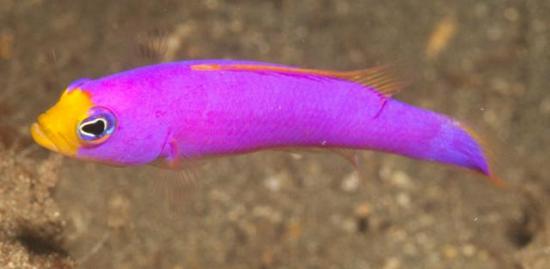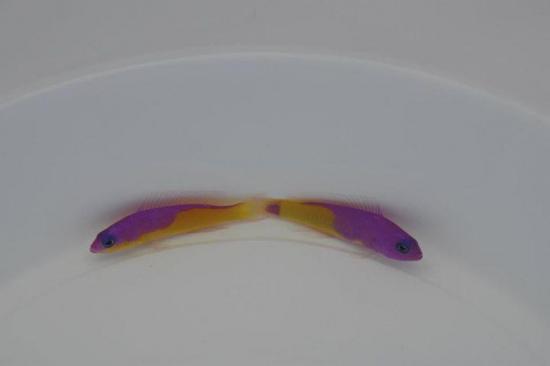-
Posts
5,302 -
Joined
-
Last visited
-
Days Won
29
Content Type
Profiles
Forums
Gallery
Everything posted by Digiman
-

OMG! Look at these hybrids and rare fishes!
Digiman replied to Digiman's topic in FOWLR (Fish-only with Live-rock)
-

OMG! Look at these hybrids and rare fishes!
Digiman replied to Digiman's topic in FOWLR (Fish-only with Live-rock)
Nice tricolor tang. The color will shift and change but will likely not revert to complete normal coloration. Should be pure AT. I dont see any hybrid traits in this fish. Juvenile xanthotis and xanthurus are indistinguishable. However if the fish comes from kenya, then it is likely a xanthotis angel as xanthurus is not found there. Xanthotis are rare in kenya. -

OMG! Look at these hybrids and rare fishes!
Digiman replied to Digiman's topic in FOWLR (Fish-only with Live-rock)
They are not popular because they require cooler temperature and grow huge. Especially caesioperca and caprodon, they are not really desirable genus for home tanks. However C.australis is beautiful. I would love to try some if i can get my hands on some juveniles. -

OMG! Look at these hybrids and rare fishes!
Digiman replied to Digiman's topic in FOWLR (Fish-only with Live-rock)
Has callanthias australis being caught before and sold in local aussie LFS? Over here we can only get callanthias japonicus (Japan). It is a big anthias and requires low temperature and as such not a popular fish. -

OMG! Look at these hybrids and rare fishes!
Digiman replied to Digiman's topic in FOWLR (Fish-only with Live-rock)
Amazing fish! I want one in my tank! However they seem difficult. Difficult to decompress and sensitive to temperature fluctuation. -

OMG! Look at these hybrids and rare fishes!
Digiman replied to Digiman's topic in FOWLR (Fish-only with Live-rock)
Perhaps in their whole exhibition the most special fish other than the juvi kingi got to be the Foetorepus Altivelis! If i am there i would take lots of picture of this very rare and deepwater dragonet of Japan. This is the first time a juvi kingi entered the trade but the second one caught and kept alive in the hobby. This little juvi kingi was too widely reported and publicised for its collector's own good. I have seen flavicauda tang during my visit in Japan. It is a nice tang and not alot more expensive than other bristletooth like the chevron tang. It will be a very popular fish when it comes. Juvi clarions are becoming more available thanks to these captive bred batch and the collector going after smaller wild specimens. However the price of CB juvi clarions is not any cheaper than the WC ones. For the price to fork out, i would still go for WC ones which will not run risk of having captive bred deformities. -

OMG! Look at these hybrids and rare fishes!
Digiman replied to Digiman's topic in FOWLR (Fish-only with Live-rock)
A beautiful Meganthias Natalensis. Too bad they grow too big for regular aquarium. -

OMG! Look at these hybrids and rare fishes!
Digiman replied to Digiman's topic in FOWLR (Fish-only with Live-rock)
Maze Angelfish New Cairns Marine Aurulentus Anthias Rare Japanese Striped Boarfish (HK) Very rare tiny masudai hogfish (JP) -

OMG! Look at these hybrids and rare fishes!
Digiman replied to Digiman's topic in FOWLR (Fish-only with Live-rock)
More rarities at Dejong Peppermint Angel Juvenile Kingi Angel Deepwater japanese dragonet ( Foetorepus Altivelis) Atavai Pencil Wrasse Pair Whitetail Bristletooth Tang Neatypus Obliquus CB Clarion angel -

OMG! Look at these hybrids and rare fishes!
Digiman replied to Digiman's topic in FOWLR (Fish-only with Live-rock)
-

OMG! Look at these hybrids and rare fishes!
Digiman replied to Digiman's topic in FOWLR (Fish-only with Live-rock)
-

OMG! Look at these hybrids and rare fishes!
Digiman replied to Digiman's topic in FOWLR (Fish-only with Live-rock)
-
Blue devil is quite tolerant of higher temp. Good choice. The ich was brought by the boxfishes sharing the same row of tanks. The fish is strong, so the ich should clear in a few days. Split fins is superficial. Will heal very quickly.
-

Weekly Shipment Update - 12th to 18th May 2014
Digiman replied to Regal's topic in Weekly LFS Stocks Report / LFS Info Centre
Sacura anthias coming to Iwarna soon -

OMG! Look at these hybrids and rare fishes!
Digiman replied to Digiman's topic in FOWLR (Fish-only with Live-rock)
-
Haha throw a raw garlic into the tank to remove ich? No harm trying yes, but i can certainly say it is not going to work.
-
Please CATCH out your clownfish IMMEDIATELY! Its the dreaded clownfish disease Brooks! Thankfully brooks only usually attack clownfish, it rarely hit other fishes. However brooks is so deadly that it will definitely kill your clown within two or three days. If treated early a medication i tried is very effective. "Interpet Number 7". It can be found more commonly at freshwater stores. It is not reef-safe. No reef-safe medication for brooks by the way. But what is important is to quickly catch out the clown from spreading to other clowns. If treatment is too late at least you will only lose that one clown and not your other clownfishes. Brooks is very hard to remove from a reef tank. What u can do now is to stop adding clownfish for many months until your tank is stable. After that only buy healthy clownfish that has been in the LFS for some time. In that way you can minimise the likelihood of brooks coming back again.
-
I do not encourage boiling your liverocks (LR) as it will cause it to become dead rocks. Then in the first place do not buy LT, just go for GO artificial rocks is better. You do not boil LR to remove ich because the ich is present in every part of your tank including your livestocks. Once you put the dead boiled rocks back to the tank, the ich will start attaching themselves to the rocks again. People boil the rocks because they want to remove hitchhikers in the rocks. However that is a very drastic measure and you do not use it unless necessary. A better approach would be to leave your LR in a pail for a few hours. When the LR is out of water, most hitchhikers will crawl out of the rock within hours. As for your ich problem, its part and parcel of this hobby. Learn to live with it and learn from it. My only advice now is to STOP adding any new fishes. Catch out the yellow tang and royal gramma if you can and put them in a QT and dose a low level of cupramine, lower than the suggested dosage is safer and at same time effective. But if you can't catch them out it is fine, just do regular water change (to maintain high water quality), feed a variety of high quality food that can boost immunity (like Dr Bassler pellets), and most importantly STOP adding new fishes. Both yellow tang and royal gramma are two hardy species that can overcome ich on their own if they are kept healthy and strong. So just wait it out. It usually takes about a month or two. Patience is the key in this hobby!
-
Dear Sea Hare, Your approach a well-known and common practice in many experienced hobbyists. The idea is simple, since we can't remove ich completely from our tank, then live in harmony with it by keeping its level low. Only when ich reaches outbreak level it can wipe out the tank inhabitants. It is the same theory as in the wild. Ich is never observed on fishes in the wild simply because the ocean is so vast that the ich population will never be able to hit an outbreak level. So what we are doing is just to achieve the same state in our tank which is much harder. Given the small water volume, ich can multiply quickly and cause an outbreak. Copper and hypo are two useful methods to kill free-swimming stage ich when an outbreak has occurred but they also stress the fish so much that unless they are administered early enough, the infected fishes will usually not pull through. Prevention is better than cure and there are 3 things experienced reefers frequently do to keep the ich level contained: 1) Install a UV 2) Maintain good water quality through regular water changes and good husbandry 3) Avoid fishes that are easily susceptible to ich like Chaetodon and Acanthurus unless your tank is very stable If your tank is stable and fishes in the prime of health, occasional "whitespots" appearing on one or two fishes is no cause of alarm as they subside quickly. That is living in harmony with ich. However to achieve that is exceptionally difficult in new hobbyists as they tend to buy and add fishes too quickly into their tank and that is when ich has a chance to become dominant and cause an outbreak. So a final piece of advice for new hobbyists. A tank can take up to one year to become mature and stabilised. So always go slow and stock slowly with careful research done on the fishes you are going to buy.
-
All the flavirostris i have seen in sg were all 5 inches plate-sized fish. They dont feed well and will break down overtime. I am surprised you are telling me tiny ones like 1" are easy and available!! I wonder why the collectors do not catch small ones and always send us plate-sized fish. May i know at what depth did you collect your tiny flavirostris? Are they locally abundant?
-

OMG! Look at these hybrids and rare fishes!
Digiman replied to Digiman's topic in FOWLR (Fish-only with Live-rock)
Rare and gorgeous hawaiian flame angels!! Hawaiian flame angels are very rare and are redder and have thinner black stripes. -

OMG! Look at these hybrids and rare fishes!
Digiman replied to Digiman's topic in FOWLR (Fish-only with Live-rock)
-

OMG! Look at these hybrids and rare fishes!
Digiman replied to Digiman's topic in FOWLR (Fish-only with Live-rock)
-

OMG! Look at these hybrids and rare fishes!
Digiman replied to Digiman's topic in FOWLR (Fish-only with Live-rock)
Hi Dr Gill, Can you confirm if these are Pictichromis ephippiata? Picture from Dejong. They labelled them as Ephippiata. My first thought was they are diadema aberrations, however i couldn't find any ephippiata pic online to confirm my guess. Pls help! -
More advice, pick the smallest butterfly you can! Smaller ones are slightly easier to maintain and keep alive. Low temperature like 24 to 25 deg will also help a lot for certain challenging species. Don't waste your time and money on chaetodon flavirostris, chaetodon aureofasciatus, chaetodon rainfordi. They will only demoralise you! Dont try! Chaetodon semilarvatus is one of the easiest and nicest butterfly around. I highly recommend it but still you need to get a smaller one. When redsea season comes, it is very common and can be found in most LFS.


